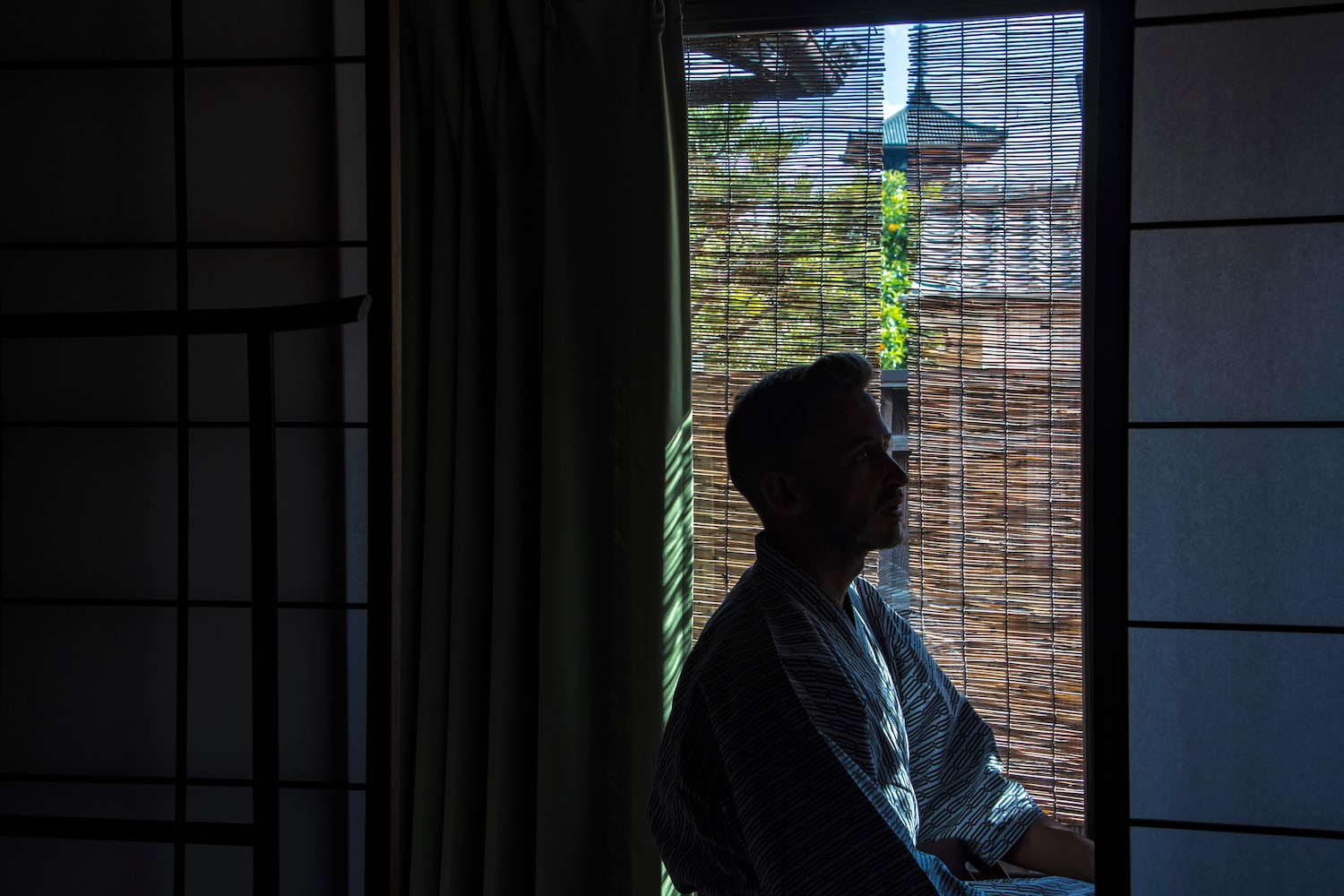Some of the most common questions I receive from readers and private clients relate to accommodation in Japan. In particular, traditional Japanese inns, both with and without hot springs.
The short answer to the question at hand—what is the difference between a ryokan and an onsen—is that while a ryokan is always a place you can sleep, an onsen is merely a hot spring facility, which may or may not have lodging attached to or associated with it.
Below, I’ll dive more deeply into the ryokan vs onsen discussion. I’ll also include recommendations for my favorite traditional places to stay throughout Japan, so you won’t want to miss that.
Why So Many People Confuse Ryokan and Onsen
Japanese words in general are confusing to non-Japanese speakers; these two are not special on their own. However, without knowing what the component parts of each word means, it can be easy to confuse them, or to use them interchangeably. This is especially the case since so many of the best-known onsen in Japan happen to be attached to some kind of inn.
At any rate, why don’t we start with a little Japanese lesson? Ryo-kan has two parts: 旅, which means “travel” and 館, which means “house” or “palace.” On-sen, by contrast, is literally made up of 温 (“warm”) and 泉, or “spring.” When you have this basic understanding of what these words actually mean, it becomes impossible to conflate them with one another, irrespective of the other facts I’m about to share.

Ways to Compare Ryokan with Onsen
Sleeping facilities (or lack thereof)
All ryokan are accommodations by default, and include somewhere to sleep. In some cases, however, these are spartan rooms that feature futon mattresses on tatami floors. By contrast, most onsen—basically, all that are not directly connected to a ryokan or other hotel—are day-use facilities by design.
Bathing facilities
Onsen are literally hot springs, and so all have places where you can bathe. Sento are indoor hot spring facilities common in cities, while outdoor rotenburo are more common in rural areas. Not all ryokan have proper onsen (i.e. public baths), but if they don’t, they do have shower facilities (though some are shared). In both onsen and ryokan, it’s common to walk around in yukata, aka traditional Japanese robes.
Cost
Although simple traveler’s inns throughout much of history, modern ryokan can be luxurious, with high prices to boot. Prices range from as little as ¥5,000-10,000 for simple minshuku, to well over ¥50,000 per night for upscale digs. Day passes for onsen, meanwhile, are usually very cheap, and often cost less than ¥1,000 per person.
Meals
If you stay at a ryokan, regardless of whether it has hot spring facilities, you’ll likely have the option for a home-cooked Japanese breakfast, and maybe even dinner. At standalone onsen, on the other hand, food options vary. Simpler sento may only have vending machines, while higher-end spots can have full-service restaurants.
Location
Ryokan and onsen can both inside and outside of cities, though each type is different. For example, ryokan in rural areas tend to be much simpler than those in major cities, though not always cheaper. Likewise, as I mentioned above, urban onsen tend to be indoor sento, while outdoor rotenburo are more common in the countryside.

My Favorite Onsen and Ryokan in Japan
I’ve unsurprisingly visited dozens of ryokan in Japan, as well as standalone onsen facilities. Here are some of my favorites:
- Takaragawa Onsen, located in the mountains of Gunma prefecture north of Tokyo, is probably my single favorite hot springs hotel in Japan.
- In Hakone, another hot springs area, I love upscale properties such as Gora Kadan, as well as simpler ones like Setsugetsuka.
- If you venture up to Mt. Koya or Koyasan, many of the shukubo (temple stay) accommodations are essentially ryokan, and also have hot springs facilities. My favorites include Saizen-in and Eko-in.
- If hot springs are a secondary priority for one, ryokan like Seikoro Ryokan in Kyoto and Kinjohro in Kanazawa are very worth visiting.
- If you want to experience hot springs accommodation with a coastal view, Amane Resort Seikai in Kyushu‘s Beppu or Isana Resort on Shizuoka‘s Izu Peninsula are great options.
- My favorite public hot spring (which don’t require booking or an overnight stay) is Dogo Onsen in Shikoku island’s Matsuyama city, as well as the main Yamashiro Onsen Honkan in Ishikawa prefecture’s Kaga Onsen. This also happens to be the oldest onsen in Japan!

Other FAQ About Ryokan and Onsen
What’s the difference between ryokan and onsen?
A ryokan is a traveler’s inn, which can range from a simple bed and breakfast to a more luxurious hotel. It may or may not have onsen, or hot spring facilities. By contrast, there are countless standalone onsen facilities throughout Japan, including indoor sento and outdoor rotenburo.
Do ryokans have private onsens?
Many upscale ryokan have private onsen facilities, with some separate from rooms and available to rent, and others (much more rarely) within the room. More modest ryokan, by contrast, tend to have communal bathing facilities.
Is a ryokan the same as an onsen?
A ryokan is not the same as an onsen, though some ryokan do have attached hot spring facilities. A ryokan is simply a Japanese-style accommodation, which can range from simple and spartan to extremely upscale. An onsen is a hot spring, which ranges from a basic indoor sento, to a luxuriant outdoor rotenburo.
The Bottom Line
Understanding the difference between ryokan vs onsen is simple once you have a few examples. A ryokan is a traditional Japanese inn, which throughout history has tended to be a simpler sort of accommodation, but these days tends to be slightly more upscale, especially in destinations like Kyoto and Kanazawa. Some ryokan even have onsen (hot springs) facilities, though this isn’t always the case. Many onsen, by contrast, are day-use facilities, be they indoor sento or outdoor rotenburo baths. The good news is that every trip to Japan presents plenty of opportunity to experience both, particularly when you hire me to plan your custom Japan itinerary.






